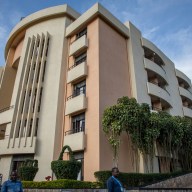LONDON (Reuters) – With the pandemic having pushed any talk of austerity to the sidelines, the race is on in Europe to spend its economies out of recession and back to some semblance of normality.
While the total cash being thrown at the challenge amounts to trillions of euros, that masks deep national differences between the amount and type of aid on offer.
In short, the rich north is able to prop up essential parts of the economy with cash that will never have to be paid back while the poorer south is more reliant on providing short-term relief in the form loans and temporary tax holidays.
To be sure, the purpose of the European Union’s 750-billion-euro joint recovery fund is to iron out such differences and make sure the wealth gap doesn’t get larger. But that money will only become available from next year, and even then only slowly.
In the meantime, national differences prevail.
Brussels-based think tank Bruegel puts the total amount of outright, non-repayable support Germany has been able to offer its companies and citizens at 8.3% of its economic output – not far short of the 9.1% figure in the United States.
That includes 100 billion euros to recapitalise and buy stakes in companies affected by coronavirus, 23.5 billion in wage subsidies for those working on reduced hours, and 18 billion in direct grants to small companies in greatest need.
Contrast that with the far less generous amounts on offer in the economies that were at the centre of the 2009 sovereign debt crisis: Portugal’s direct stimulus aid totals just 2.5% of output, Greece’s 3.1%, Spain’s 3.7% and Italy’s 3.4%.
Graphic: Government support to Europe’s economies – https://graphics.reuters.com/EUROPE-ECONOMY/GREATREBOOT/oakpenlqkvr/EUROPE-ECONOMY-GREATREBOOT.jpg
For an interactive version of the above graphic see https://tmsnrt.rs/3jTsUP7
Rome offered a massive 220 billion-plus euros worth of moratoriums on the loans and mortgages of small companies – but as things stand, come end-January they will have to carry on where they left off with loans just as big as before.
Madrid faces a similar dilemma. The government there backed credits of 140 billion euros to businesses and banks negotiated grace periods with companies on repayment schedules. But as those grace periods start to run out, concerns are rising of a wave of bankruptcies and Spain is seeking to offer more help.
Friday’s news of a much stronger-than-expected rebound in the eurozone economy in the third quarter therefore only tells half of the story – coming before a second wave of infections took hold in October and with even the poorest economies still benefiting from state support.
As new restrictions start to hit activity, the bleakest could be yet to come.
Graphic: Euro zone GDP – https://fingfx.thomsonreuters.com/gfx/mkt/jznvnjgdgvl/Pasted%20image%201604059811676.png
(This story refiles to correct typo in headline)
(Editing by Kirsten Donovan)



















